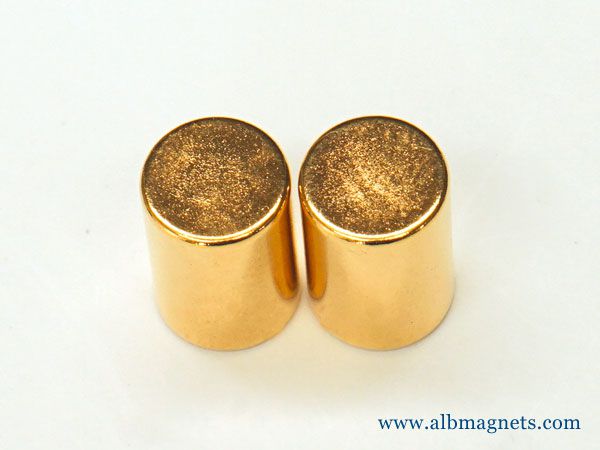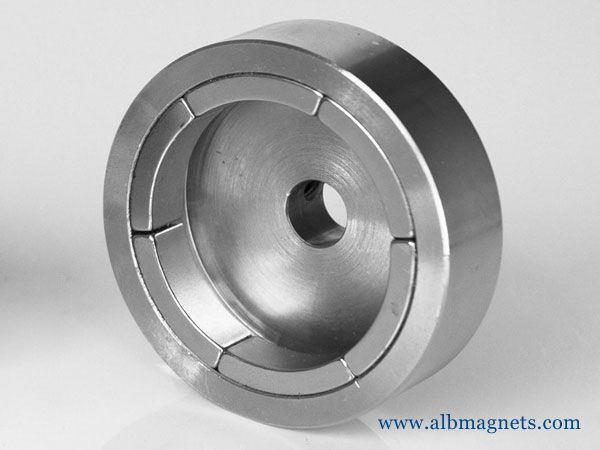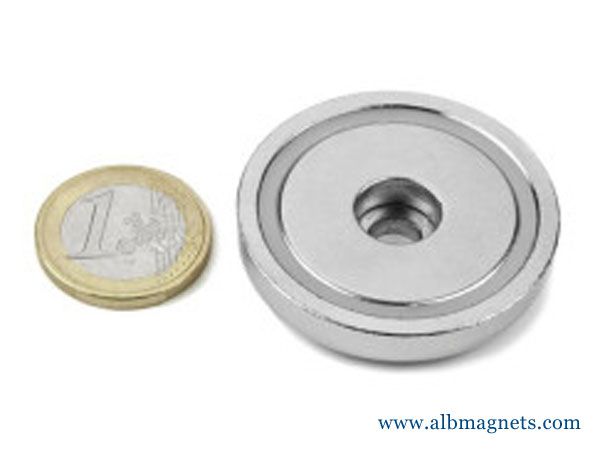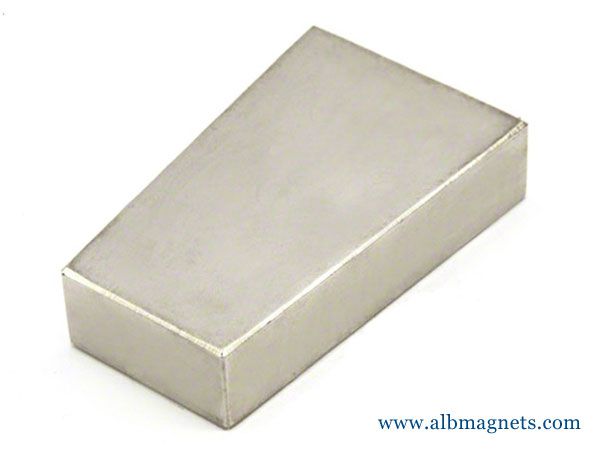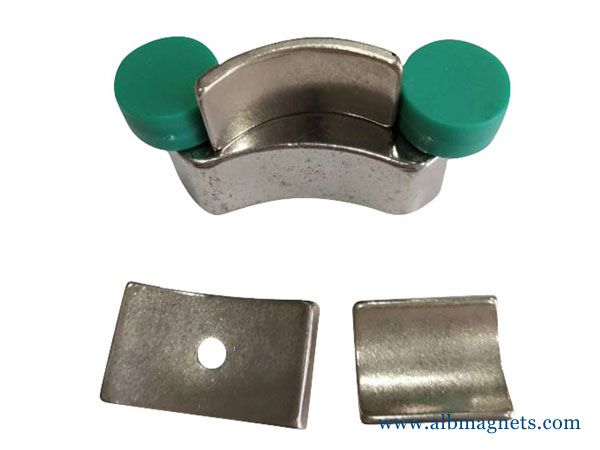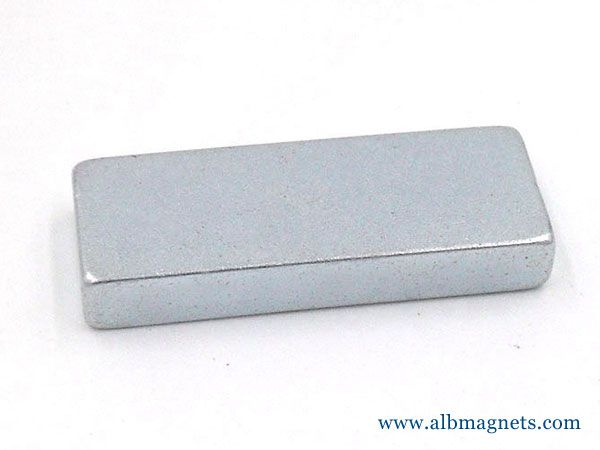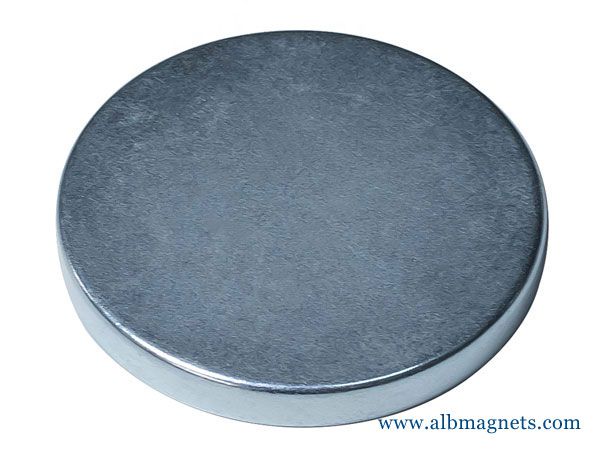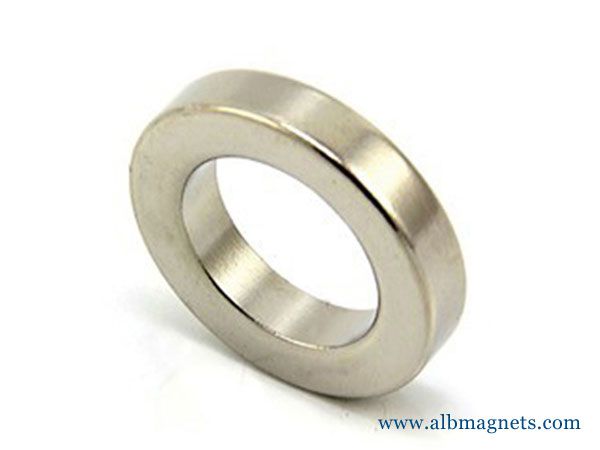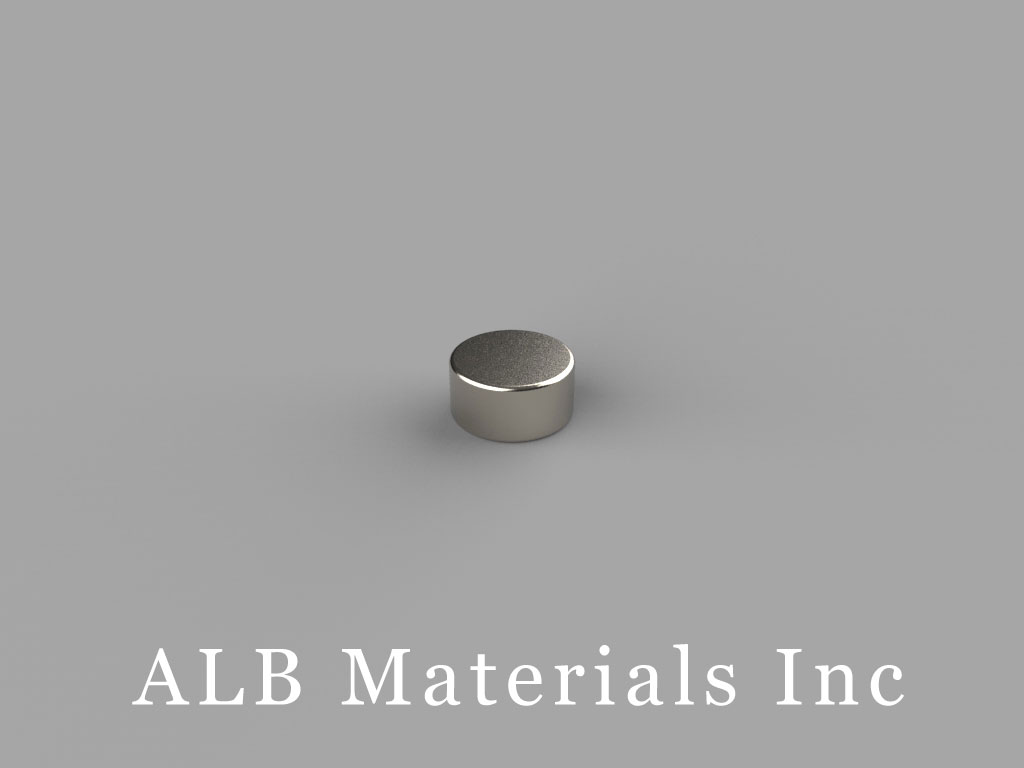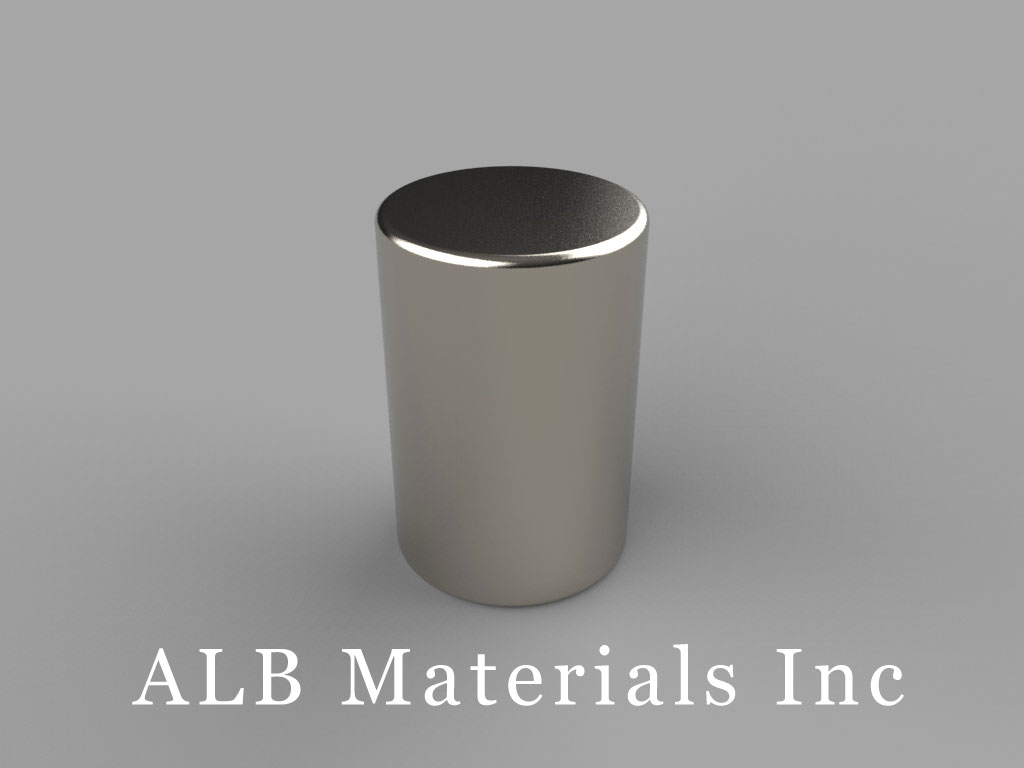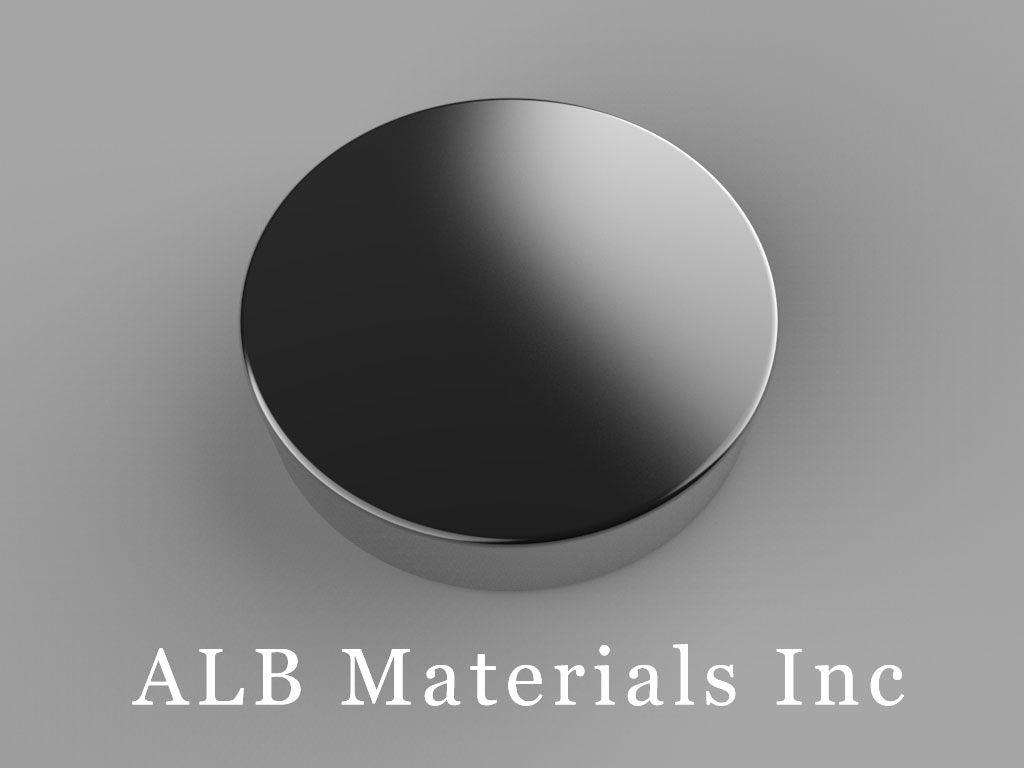401 Ryland St. Ste 200-A,
Reno, NV 89502
United States
E-mail: sales@albmaterials.com
- D4Z0 Neodymium Magnets, 1/4 inch dia. x 3 inch thick
- B5x5x4mm Neodymium Magnet, 5 x 5 x 4mm Block Magnet
- C-D3H3-N50 Neodymium Magnet, 3x3mm Cylinder Magnet
- B30x15x3mm Neodymium Magnet, 30 x 15 x 3mm Block Magnet
- BC1C Neodymium Magnets, 3/4 inch x 1/16 inch x 3/4 inch thick
- BCC4DCS Neodymium Magnets, 3/4 inch x 3/4 inch x 1/4 inch thick w/ countersunk hole to accept #6 screw
- DX03 Neodymium Magnets, 1 inch dia. x 3/16 inch thick
- B-W7H3L7-D3.5-N35 Neodymium Magnet, 7x7x3mm with D3.5mm hole Block Magnet
- DFX0 Neodymium Magnets, 15/16 inch dia. x 1 inch thick
- DY03 Neodymium Magnets, 2 inch dia. x 3/16 inch thick
- BEE4 Neodymium Magnets, 7/8 inch x 7/8 inch x 1/4 inch thick
- MMS-A-Y0 Standard Mounting Magnets
- D-D30H10-N45 Neodymium Magnet, 30x10mm Disc Magnet
- D20x10mm Neodymium Magnet, 20 x 10mm Disc Magnet
- MMS-C-XC Standard Mounting Magnets
- D-D2H1-N48 Neodymium Magnet, 2x1mm Disc Magnet
10 Examples Of Permanent Magnets
10 examples of permanent magnets
10 questions with answers in Permanent Magnets
Work is done to make a permanent magnet, and entropy is lower in the magnet than in a disordered bar of the same material.
So conservation laws are suggesting there is some way for the bar to do work while losing its magnetic charge, similar to temporary magnets in motors, generators, and transformers.
To do work without losing magnetism, the field of one magnet must move through the field of another magnet.
Some small motors are made this way, and some power source is required to move the magnets.
In the present question, a single permanent magnet that is not moving has in principle an electric field vector circling the magnetic field lines, but a solenoid surrounding the magnet receives no EMF unless the magnet is moved relative to the solenoid. Otherwise, the electric field components cancel each other out in a process similar to eddy currents.
Transformers have ways to suppress eddy currents and achieve higher efficiency. Are there ways to suppress eddy currents in permanent magnets, and cause the electric field components to add together instead of canceling out? If so the device should get cold or borrow some other energy source from the surroundings.
Why Does A Permanent Magnet Do No Work?
If I put a heavyweight on a spring on top of a car jack and then jack it up in the air, it requires work to get the jack-up.
However, once it is up it does not require any work to keep the weight on top of it.
If the weight is changed the spring will flex but the jack does not work.
The spring will store and release energy depending on the load.
The same principles apply with a permanent magnet.
It requires work to align the magnetic dipoles or domains, but then no work is required.
Changing the magnetic load changes the stored energy in the field but the magnet is not required to do any work, unless the load is enough to push the domains or dipoles permanently out of alignment - like bending the jack or pushing hard enough to make the handle rotate!
Difference Between Electromagnet and Permanent Magnet
The major difference between an electromagnet and permanent magnet is that the former can have a magnetic field when electric current flows through it and disappears when the flow of the current stops.
On the other hand, permanent magnets are made up of magnetic material that is magnetized and has its own magnetic field.
It will always display the magnetic behavior.
Difference Between Electromagnet and Permanent Magnet
As the name suggests permanent magnet magnetic field is permanent and electromagnets magnetic field depends upon the flow of the electrical current.
The electromagnet constitutes a coil made of wire which acts as a magnet when current is passed through it.
Usually, a ferromagnetic material like steel is wrapped by an electromagnet to enhance its magnetic field.
Electromagnet: The magnetic properties are displayed when current is passed through it
Magnetic properties exist when the material is magnetized
The strength is adjusted depending upon the amount of flow of current
The strength depends upon the nature of the material used in its creation
Removal of magnetic properties is temporary
Once magnetic properties are lost, it becomes useless
It requires a continuous supply of electricity to maintain its magnetic field.
It doesnt require a continuous supply of electricity to maintain its magnetic field
It is usually made of soft materials
It is usually made of hard materials
The poles of this kind of magnet can be altered with the flow of current
The poles of this kind of magnet cannot be changed.
These were some difference between the electromagnet and permanent magnet.
The strength of the magnetic field line is constant i.e.: it cannot be varied.
The strength of the magnetic field lines can be varied according to our needs.
The poles of a Permanent magnet cannot be changed.
The poles of an electromagnet can be altered.
Example of a permanent magnet is a Bar Magnet
An example of a temporary magnet is solenoid wounded across a nail and connected to a battery.
Similarities between Permanent Magnets and Electromagnets
Both the magnets possess imaginary magnetic field lines.
The magnets have north and south-pole whose behavior depends on the Geographic north-pole and south-pole of the earth.
Both the magnets exhibit the properties of magnetism.
Advantages of Electromagnets over Permanent Magnets
You can get electromagnets at cheaper rates than the permanent magnets.
This is because the cost of materials used in the electromagnet is lesser.
You can alter the magnetic strength of an Electromagnet according to your needs.
This is not possible in the case of a permanent magnet.
Disadvantages of Electromagnets
Electromagnets require a large number of copper couplings.
This makes them unfit for use in small spaces.
They also require a lot of maintenance.
The short-circuit may damage the electromagnet.
Electromagnets require a continuous supply of current.
This may, at some point in time, affect the magnets and its field due to various factors like ohmic heating, Inductive voltage spikes, core losses, the coupling of coils, etc.
Disadvantages of Permanent Magnets
You can produce the magnetic field of a permanent magnet only below a certain temperature.
Therefore, you cannot use this type of magnets for hot-device applications.
These permanent magnets tend to corrode with time.
The strength of the maximum magnetic field is, thus, reduced.
You cannot vary the poles of the permanent magnet.
Types of Permanent Magnets
In this section, we will discuss the various types of the permanent magnet.
They are Ceramic Magnet: These magnets are the most inexpensive permanent magnets.
We use them in food processing industries, resonance imaging etc.
Flexible Magnets: The door seals used in the refrigerator are flexible magnets.
You can develop these through a combination of rubber polymers, plastic, and magnetic powders.
Neodymium Iron Boron Magnet (NdFeB): It a type of rare earth magnet.
You can oxidize it very easily.
It is a very expensive material.
We commonly use it in jewelry making, bookbinding etc.
Samarium Cobalt (SmCo) Magnet: This is a type of rare earth magnet.
It is resistant to temperature and oxidation.
They have a higher magnetic strength.
You can use them in high-end motors, turbomachinery etc.
Application of Electromagnets
Transformers use electromagnets most commonly.
The coils in the transformer produce varying magnetic fields when you supply the current.
This induces a voltage.
We use transformers primarily used to regulate the alternate voltages in the electric power system.
You can achieve the desired voltage as and when required.
We can do this by changing the amount of current.
You can also use electromagnets in magnetic locks, relays, magnetic levitation, electric bells, loudspeakers etc.
Solved Example For You
Q: Which among the following consists of soft iron?
A) Permanent Magnet B) Electromagnet C) Temporary Magnet D) All
Solution: B) The soft iron inside the coil makes the magnetic field stronger as it itself becomes a magnet when the current starts to flow.
Soft iron is suitable because it loses its magnetism as soon as the current stops flowing.
A 2.5 T wide sample space permanent magnet
Cost of Hardware?: $750.00
Hardware name?: ?Directionally Orientated NIB ...
Open Source License?: ?Attribution-ShareAlike 4...
Hardware type?: ?Mechanical engineering and ...
The permanent magnet apparatus described herein is based upon the C-shaped permanent magnet.
It is designed to maximize field strength while increasing the pole gap to 5?mm, providing a sample volume large enough for wide applicability.
The production of this equipment aims to provide a homogeneous, high field (2.5?T) magnetic sample environment with a volume large enough to accommodate solution crystallization experiments in sample chambers such as NMR tubes and cuvettes whilst simultaneously allowing direct observation of the sample from a wide-angle.
Although the resulting rig is not lightweight at 26.5?kg it is eminently more portable than an equivalent electromagnet system (of the order of 625?kg) and provides a max field strength of 2.468?T with the relatively low stray field.
What are Permanent Magnets
Studying The Behavior Of Permanent Magnets
Permanent Magnets And Magnetic Behaviour
The magnetic field is produced by objects known as magnets.
When these properties of magnetism are not lost throughout the time its known as a permanent magnet.
So what is this special property in a permanent magnet that is not lost in the test of time?
Magnetism is shown by ferromagnetic material as well.
Some of the materials are a few alloys of iron and nickel.
The way the domains are oriented in a ferromagnetic substance depends on the property of magnetism.
The magnetic fields that are produced individually cancel themselves out when the domains are randomly oriented.
A collective magnetic field can be produced by reducing the randomization of the domain by influencing it by an electrical field.
This is one of the processes through which electromagnets are produced.
But if the domains are already arranged such that they point in the same direction, even without an external influence they will produce a collective magnetic field.
These are permanent magnets.
When imposing a magnetizing field on ferromagnetic substances the domains get arranged to produce magnetism and do not go back to their normal state.
When the driving field is zero and even then the domains have not rearranged themselves to normalcy the time the substance takes to demagnetize or remains magnetized for is known as remanence.
If we try to put the magnetic property back to zero by applying a field in an opposite direction the amount of that reverse field thats required to demagnetize that substance is known as coercivity.
The lack to retain the magnetic property of a substance is known as hysteresis.
Have you ever noticed that an iron nail which has been attached to a magnet for sometime attracts other nonmagnetic iron nails for a short span even after it has been detached from the magnet? This is because the domains of the iron nail had been reoriented.
This effect is weak and is lost pretty soon.
Therefore that iron nail will not be considered as a permanent magnet.
The main advantage of a permanent magnet over any other type is that it does not need a continuous supply of external energy (in the case of electromagnets, electricity) to exhibit magnetism.
For example, permanent magnets are used as compass needles.
An everyday example of a permanent magnet is a refrigerator magnet.
The image below shows the magnetic field produced by a bar magnet.
The magnetic field is the sphere of influence of the magnet.
This can be visualized by sprinkling iron filings on a bar magnet.
The filings will arrange themselves on the magnetic field lines of the magnet used.
The strength of different magnets can be seen physically in this way.
This can be visualized by sprinkling iron filings on a bar magnet.
The filings will arrange themselves on the magnetic field lines of the magnet used.
The strength of different magnets can be seen physically in this way.
Natural vs. Artificial Magnets: Definition & Examples
you'll learn about the differences between natural and artificial magnets.
You'll learn that natural magnets are always weaker than artificial magnets.
Definition of Magnets
Do you have magnets on your refrigerator door? If you do, do you notice how those magnets stick to metals, such as iron? However, if you have a stainless steel fridge, have you noticed that your magnets don't stick? That's because stainless steel, made with nickel, is not magnetic.
By definition, a magnet attracts iron and will align itself so that its north point will point towards the Earth's north pole.
Let's learn about natural magnets and artificial magnets.
Natural Magnets: A natural magnet is a magnet that occurs naturally in nature.
All-natural magnets are permanent magnets, meaning they will never lose their magnetic power.
Natural magnets can be found in sandy deposits in various parts of the world.
The strongest natural magnet material is a lodestone, also called magnetite.
This mineral is black in color and very shiny when polished.
The lodestone was actually used in the very first compasses ever made.
Because natural magnets are permanent magnets if lodestone is allowed to freely spin, its north pole will always align itself with the Earth's geographic north pole.
Today, if you visit a gem and mineral show, you'll find lodestones on display.
Play with them and you'll see just how strong their magnetism is.
A single lodestone can lift a string of a dozen or so other lodestones into the air.
There are other minerals that are natural magnets, but they are weak magnets so they won't be able to lift too much metal.
Some of these are pyrrhotite, ferrite, and columbite.
Artificial Magnets: When magnets are made by people, they are called artificial magnets.
It's these magnets that are on your refrigerator door, and they have extra-strong magnetic power, like those really tiny super-strong magnets that you can buy from toy or science stores.
There are two types of artificial magnets: temporary and permanent.
Temporary magnets are magnets that aren't always magnetic, but their magnetism can be turned on at will.
Permanent magnets are those magnets whose magnetic strength never fades.
Permanent artificial magnets can also be made to suit the application they're for.
They can be made so that the magnet's north and south poles are located at specific spots.
For example, a ring magnet can be made so that the north pole is on the outside and the south pole is on the inside, or with the north pole on the inside and the south pole on the outside.
Examples of Artificial Magnets
There are many different artificial magnets that have been made.
Two examples of temporary artificial magnets include the electromagnet and the paper clip.
Permanent Magnets: Characteristics & Strength
Permanent magnets generate their own magnetic fields.
In this lesson, we will discuss the characteristics of permanent magnets, and what affects how strong they are.
What is a Magnet?
Magnets are involved in our everyday lives.
They are in speakers so we can hear music, they assist in storing data in computers, but mostly we think of them as keeping the refrigerator's doors closed and keeping kid's drawings attached to the outside.
Let's discuss the characteristics and strengths of magnets.
A permanent magnet is a metal that generates a magnetic field without electricity.
Magnetite is a mineral found in the earth and was used in primitive compasses.
All magnets have North and South ends with magnetic field lines that leave the North end and loop around to the South end.
Magnetic field lines
These field lines move out in three-dimensions even though we generally only get to see two dimensions when metal filings are sprinkled over the magnet.
Two-dimensional magnetic field outlined by iron filings 1
If you cut a magnet if half, you would end up with two magnets, both with North and South poles.
There are no single poled magnets
Electron Spin
It is theorized that magnetic properties arise from the magnet's electrons all spinning in the same direction.
Arrows represent electron spin
Permanent magnets can temporarily magnetize iron.
When a piece of iron is brought near a permanent magnet, its electrons align themselves with the magnetic field of the permanent magnet.
The strength of the induced magnetic iron is not as strong as the permanent magnet, and it quickly weakens when it is out of the permanent magnet's field.
Magnetic Strength
Have you ever noticed that those flimsy magnets that hold papers to the refrigerator can't hold multiple papers? Magnetic fields can penetrate through objects, but the field weakens with distance.
If you dropped a very strong magnet and a weak magnet an inch away from the refrigerator, the strong magnet would move sideways and attach itself to the refrigerator.
The weak magnet will meet the floor.
There are a few factors that determine the strength of permanent magnets.
First off, not all materials are magnetic.
Aluminum and stainless steel will not feel any attractive force to a permanent magnet.
The material the magnets are composed of is a factor in their strength.
Neodymium-iron-boron (NIB) magnets are made by melting those three elements and then cooling the liquid in a strong magnetic field.
The size of the magnet is generally affected how strong it is.
The larger the magnet, the stronger it is.
There is an exception to this with the small NIB magnet, which are extremely strong for their small size.
NIB magnets
The shape of the magnet also affects how strong it is at various locations on the magnet.
The ends of a bar magnet are stronger than the sides of the magnet.
The reason for this is because the more concentrated the magnetic field is, the stronger it is.
Horseshoe magnets are stronger at their tips as seen by the larger congregation of iron filings there
Let's take two identical magnets and manipulate them into two different shapes.
The first magnet will be widened at the ends, and the other will be shaped into a cylinder with a pointy end.
The pointy magnet will be effectively stronger at the pointy end, even though they both still maintain their net magnetic strength.
Types of Magnets
Permanent magnet examples include Alnico (an alloy of aluminum, nickel, and cobalt) and ferrites (ceramic-like material made from a mix of iron oxides with nickel, strontium, or cobalt). Electromagnets are created by running an electrical current through a coil with a metal core.
What types of magnets exist in the world?
First, a definition.
Magnets are solid objects that attract iron or steel.
Magnets do this by a phenomenon called magnetism, in which they generate a force that extends into a (magnetic) field (i.e., the area around the magnet).
A magnet may have the ability to do this naturally, such as lodestone, or it may acquire the ability when combined with other elements (e.g., samarium cobalt).
Types of Magnets
The three types of magnets are temporary, permanent, and electromagnets.
Magnets are categorized by their source of magnetism.
Temporary magnets become magnetized in the presence of a magnetic field.
They lose their magnetism gradually when the magnetic field is removed.
Some irons and iron alloys, as well as paper clips and nails, function as temporary magnets.
screwdrivers can be temporarily magnetized
Permanent magnets do not easily lose their magnetism.
These magnets may be naturally-occurring (rare-earth) elements or chemical compounds.
Permanent magnet examples include Alnico (an alloy of aluminum, nickel, and cobalt) and ferrites (ceramic-like material made from a mix of iron oxides with nickel, strontium, or cobalt).
Electromagnets are created by running an electrical current through a coil with a metal core.
The energized coil creates a magnetic field.
When the current is shut off, the magnetic field disappears.
Electromagnets are preferred for applications that require strength including railroad tracks, motor engines, MRI machines, and cranes.
Theyre also used in computer and television hardware.
cranes use electromagnets
Magnets in Experiments
Permanent magnets are commonly made from ceramic, alnico, and neodymium.
Ceramic magnets are strong and work well for most experiments.
Alnico magnets are stronger and more expensive and work very well for science experiments.
Neodymium magnets are the strongest and most expensive of the three.
Part of the content in this article is reproduced from other media for the purpose of transmitting more information and does not mean that this website agrees with its views or confirms the authenticity of its content. It shall not bear direct responsibility and joint liability for the infringement of such works.
If there is any infringement, bad information, error correction, and other issues in the content of this page, please contact us at info@albmaterials.com
Link to this article: https://www.albmagnets.com/blog/10-examples-of-permanent-magnets.html
How to choose and buy a strong neodymium magnet? ALBMagnets is a professional company for strong magnet design and manufacturing,
providing you with reliable N35, N38, N42, N52, N42SH and other grade super neodymium magnets and SmCo rare earth magnets.




